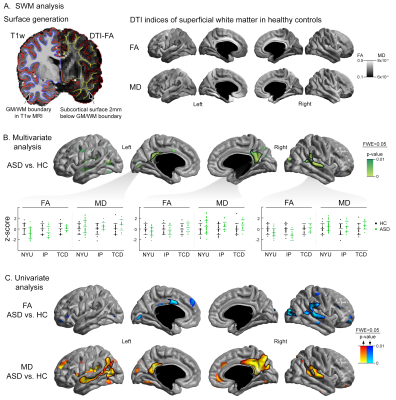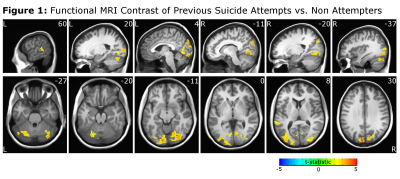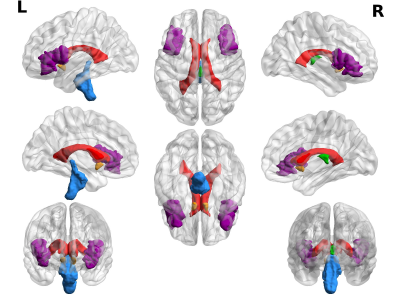Psychoradiology for Neuropsychiatric Disorders
Psychoradiology for Neuropsychiatric Disorders
Combined Educational & Scientific Session
Combined Educational & Scientific Session
ORGANIZERS: Qiyong Gong, John Port
Wednesday, 15 May 2019
| Room 513D-F | 08:15 - 10:15 | Moderators: Christopher Hess, Fei Li |
Skill Level: Basic to Advanced
Session Number: W-02
Overview
MR has been the mainstay for psychoradiology, a subspecialty of radiology which is not only providing a deep insight into the underlying neuropsychopathology, but also primed to play a major clinical role in guiding diagnostic and treatment planning decisions in the patients with neuropsychiatric disorders.
Target Audience
Clinicians and researchers interested in the use of MR in neuropsychiatric disorders.
Educational Objectives
As a result of attending this course, participants should be able to:
- Explain the history of psychoradiology;
- Describe the key research MR findings in major neuropsychiatric disorders; and
- Describe the techniques for identifying MR imaging biomarkers and treatments targeted at individual patients with major neuropsychiatric disorders.
Overview
MR has been the mainstay for psychoradiology, a subspecialty of radiology which is not only providing a deep insight into the underlying neuropsychopathology, but also primed to play a major clinical role in guiding diagnostic and treatment planning decisions in the patients with neuropsychiatric disorders.
Target Audience
Clinicians and researchers interested in the use of MR in neuropsychiatric disorders.
Educational Objectives
As a result of attending this course, participants should be able to:
- Explain the history of psychoradiology;
- Describe the key research MR findings in major neuropsychiatric disorders; and
- Describe the techniques for identifying MR imaging biomarkers and treatments targeted at individual patients with major neuropsychiatric disorders.
| 08:15 |
|
The Long Road to Psychoradiology
John Sweeney
Starting 40 years ago, CT studies and then MRI demonstrated brain alterations particularly in psychotic disorders such as schizophrenia, but also in mood disorders, drug abuse, autism and most other more serious psychiatric conditions. With their increasing robustness following technical advances in image acquisition and analysis, psychiatric imaging research has begun evaluating the clinical relevance of these findings for diagnosing and treating individual patients. A review of past progress and pathways forward in this next step for psychiatric imaging research will be the focus of this presentation.
|
| 08:35 |
|
Current Psychoradiology Toolbox
Hesheng Liu
|
| 08:55 |
|
Current Imaging of Autism
Birgit Ertl-Wagner
Autism Spectrum Disorder (ASD) is a pervasive disorder with a relatively high prevalence that manifests in early childhood. Magnetic Resonance Imaging (MRI) is currently not a screening tool for ASD and it is not used in the routine evaluation of the disorder unless other concerning clinical features are present. However, it plays an important role in ASD research and multiple advanced imaging and post-processing strategies are currently being employed to subgroup and to elucidate potential mechanisms of disease. When performing neuroimaging research in ASD it is important to keep the pronounced heterogeneity of the disorder in mind.
|
| 09:15 |
 |
Surface-based diffusion MRI analysis of the superficial white matter in autism: association with functional networks and symptom severity
Seok-Jun Hong, Hyung Brian, Shahin Tavakol, Alexander Lowe, Sara Lariviere, Reinder Vos De Wael, Casey Paquola, Boris Bernhardt
Our study focused on a region that remains relatively unexplored by autism neuroimaging: the superficial white matter (SWM) immediately beneath the cortical interface, a compartment known to play a key role in corticogenesis and connectivity. A surface-based diffusion-MRI analysis revealed SWM anomalies in a multicentric ASD cohort compared to neurotypical controls in medial parietal and
|
| 09:30 |
0713.  |
Total suicide attempts associated with distinct functional neuroimaging correlates in bipolar disorder
Joseph Shaffer, Virginia Willour, Casey Johnson, Jeffrey Long, Jess Fiedorowicz, Gary Christensen, John Wemmie, Vincent Magnotta
Suicidal behavior is a major cause of injury and death in bipolar disorder. We measured the relationship between a history of suicide attempt and brain activation to a flashing checkerboard task in bipolar disorder using functional magnetic resonance imaging (fMRI). We compared activity between suicide attempters and non-attempters and we separately tested the relationship between brain activity and the number of past suicide attempts. These two analyses produced distinct patterns of results that indicated a mood-state independent relationship between suicide attempts and prefrontal and cerebellar activity. These findings suggest that accounting for multiple attempters may strengthen studies of suicidal behavior.
|
| 09:45 |
0714.  |
Analysis of feature importance in deep neural networks in psychiatric disorders using magnetic resonance imaging
Irina Sánchez, Carles Soriano-Mas, Antonio Verdejo-García, Narcís Cardoner, Fernando Fernández-Aranda, José Manuel Menchón, Paulo Rodrigues, Vesna Prckovska, Matt Rowe
Current methods to
|
| 10:00 |
0715.  |
Targeting emotional dysregulation in adult attention-deficit hyperactivity disorder
Antonia Kaiser, Liesbeth Reneman, Paul Lucassen, Taco de Vries, Anne Marije Kaag, Anouk Schrantee
Emotional dysregulation (ED) is a core symptom of ADHD. Previous studies suggested that taxing WM can reduce amygdala hyper-responsiveness (associated with ED), using traditional emotional interference tasks. However, these tasks make it impossible to disentangle emotional and WM mechanisms. We
|
| 10:15 |
|
Adjournment |
 Back to Program-at-a-Glance |
Back to Program-at-a-Glance |  Back to Top
Back to Top